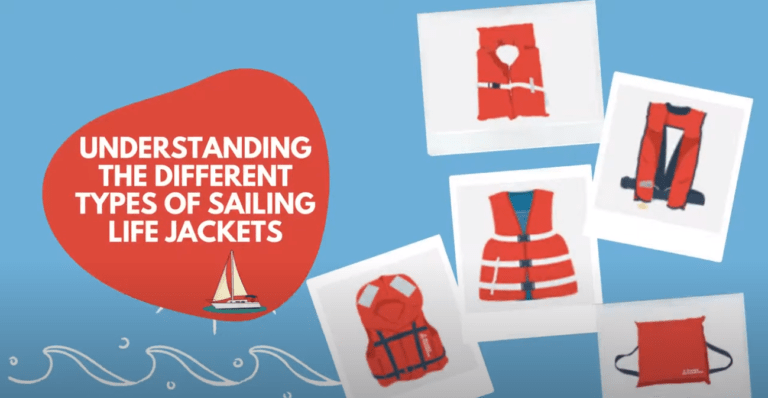Type 1 Life jacket (PFD) – Offshore Life Jackets
A TYPE I PFD, or OFFSHORE LIFE JACKET provides the most buoyancy.
- It is effective for all waters, especially open, rough, or remote waters where rescue may be delayed.
- It is designed to turn most unconscious wearers in the water to a face-up position.
Type 2 Life jacket (PFD) – Near-Shore Vests
A TYPE II PFD, NEAR-SHORE BUOYANT VEST is intended for calm, inland water or where there is a good chance of quick rescue.
- This type will turn some unconscious wearers to a face-up position.
- The turning action is not as pronounced nor as effective as a TYPE I.
Type 3 Life jacket (PFD) – Flotation Aids
A TYPE III PFD, or FLOTATION AID, is good for calm, inland water, or where there is a good chance of quick rescue.
- This PFD type will not turn unconscious wearers to a face-up position.
Type 4 Life jacket (PFD) – Throwable Devices
A TYPE IV PFD, or THROWABLE DEVICE, is intended for calm, inland water with heavy boat traffic, where help is always present but can be used in open water as well.
It is designed to be thrown to a person in the water and grasped and held by the user until rescued.
Type 5 Life jacket (PFD) – Special-Use Devices
TYPE V, special use devices, are intended for water sports (such as windsurfing, kayaking, or waterskiing) and can be used only for the specified conditions.
- They can be deck suits, work vests, board-sailing vests and others.
- They are the least bulky.
- Some are designed to automatically inflate when entering the water.
- It contains a small amount of inherent buoyancy and an inflatable chamber and must be worn when underway to be acceptable.
Make sure all your PFDs are in good condition
Ultraviolet sunlight, rough handling and improper storage make it necessary to ensure that your PFD is in serviceable condition. This is a USCG requirement. Check for rips, tears, and holes and make sure seams, straps, zippers and hardware are okay. Make sure there is no sign of waterlogging, mildew odor, or shrinkage of the buoyant materials. If your PFD is discolored, torn or has torn straps, discard and replace it. Exposure to sunlight and moisture can deteriorate PFDs rapidly. Let your PFD drip dry thoroughly before putting it away. If your PFD has been in salt water, rinse it thoroughly with fresh water. Stow your PFDs in a well-ventilated place.




